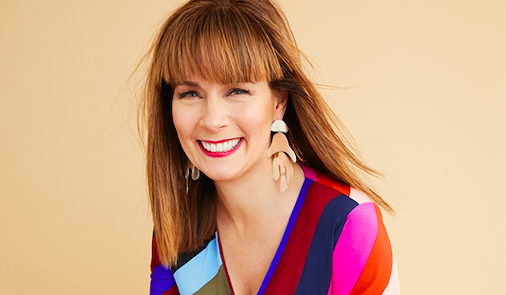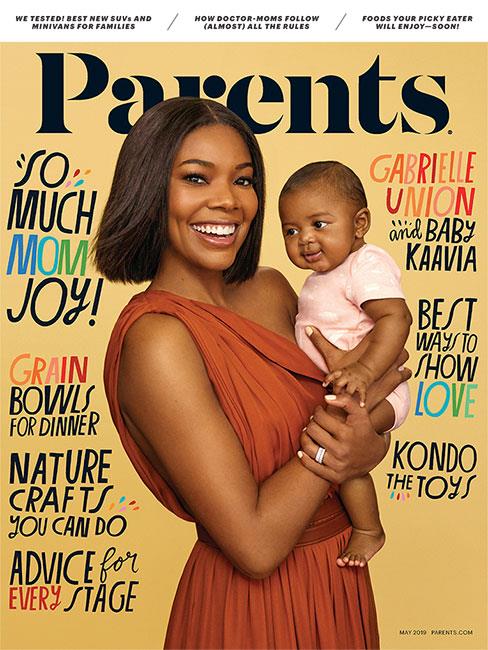|
Getting your Trinity Audio player ready...
|
Last week, Canadian magazine publishers learned about Parennials, a new generation of Millennial parents with characteristics that make this target audience different from generations that came before them.
Liz Vaccariello, editor-in-chief of Parents Magazine at Meredith Corporation, shared insights that are key to understanding this audience and what they want and need from their magazine media, at Magazines Canada’s annual conference, MagNet, held in Toronto April 24-26.

Parennials, a term coined by the Meredith brand to refer to the millennial parent audience they serve, number approximately 17 million in the United States. “The millennial mom, the Gen Z mom is a very coveted consumer,” Vaccariello said. “There is this huge tsunami of parents, mostly women, who are moving into the parenting space. There are 17 million millennial moms in the US and it’s continuing to grow by about a million a year.”
Vaccariello explained that the brand is keeping an eye on Gen Z, because they’re also entering the parenting space. “More important than anything is that being a parent is not just a life stage now, among these millennials is a lifestyle.”
When Vaccariello came to Parents magazine two and a half years ago from Trusted Media Brands, she changed the Meredith title to better reflect the mom and the parent. In delving deeper into research on Parents’ readers, she discovered that there is little duplication for these years in the US. “This is the only magazine that of a mom of a young baby or toddler is getting,” Vaccariello said. “I tried to show the full emotional range of parenting through influencers. We found that putting people that our readers are seeing on their Instagram pages, on the cover, is one of the many bridges that we can make.”
Parennials are different than young parents of other generations that came before them. And, it’s not just because they’re tethered to their phones. Vaccariello explained 11 insights that this audience wants from their media, and that drive the focus and some of the stories in Parents magazine.

Parennials want to maximise their 20 hours
Parents magazine does a lot of social listening, Vaccariello explained. Through social listening, the brand discovered that working millennial parents want to maximise the time they spend with their children Monday through Friday – about 20 hours a week. “It’s not a lot of time,” Vaccariello said. “And, because this millennial is very interested in being mindful, she wants to maximise that time. It’s not only about Christmas and Easter and the first day of school, it’s also about the small moments in the backyard blowing bubbles, about creating rituals and memories in those moments.”

Millennial parents want cozy homes
Parennials also want homes that are cozy retreats from the world, and this is something around which Vaccariello redesigned part of Parents magazine. “I broke the home coverage into three distinct parts: decor, cleaning and clutter,” she explained. “So this idea of managing the cleaning and then decor at the very same time that they’re walking into being a parent. They’re also maybe in their first house.”
The Parents audience cares about the planet, so if they can create content around it, it’s generally a winner. For example, the most popular story for the entire year focused on the right way to recycle your kids stuff.
This Parennial wants woke brands
Parennials are different from other generations of parents before them, in that they want to align with woke brands, Vaccariello explained. “This means the magazine also has to reflect the multi-cultural landscape that reflects America. We must reflect our diverse culture, and the different configurations of families. This has become a must-have,” she said.
She said the magazine brand knows that their audience wants to align with woke brands and spend their money with companies that are socially responsible.
Parennials love food
Parents magazine covers food in every section of the magazine. Culturally nostalgic food is a popular content topic, for example. Parents magazine covers food from school lunches to family dinners, and always try to go deeper into the content, because Millennial parents want food all of the time, Vaccariello said.
“We do a major food study every year, and we found that the struggle is still real for moms to get dinner on the table in a way where she’s not being a short order cook,” she said. “40 per cent of kids are still eating a different dinner than their parents.”
Parennials are having this moment of realisation that family time doesn’t have to revolve around dinner time, as their kids get older, maybe they have practices and lessons and five, six o’clock is fussy time for their toddler, she added. “They’re wondering why they’re putting all this pressure on that meal? Instead, they’re getting up 20 minutes earlier, setting the table and having breakfast as the family meal.”
Parennials also want nutrition, despite embracing packaged food. Packaged foods are part of their lifestyles, Vaccariello said. “They are interested in how companies are improving packaged foods and making it easier to feed their family healthfully. They want as much information about what’s in that packaging as possible.”
Parennials and technology are attached at the hip
Another of the insights into understanding this millennial parent audience, is that technology and devices are a positive part of their worlds. “We were pleased to know that 76 per cent of this younger cohort believe that technology helps them be a better parent,” Vaccariello said. “They grew up with a phone and so will their kids.”
Parents magazine looked into technology and the Millennial parent, and discovered that they wanted content on this intersection of technology in their lives. “It was everything from phones and apps making things easier for her to manage the household and manage the family to voice-activated experiences like Alexa,” Vaccariello said. “Not only are we making sure that we are providing parenting tools on those platforms for our consumers, but we’re also helping guide her as she navigates what are the podcasts and my kids could listen to, what should I be signing up for for Alexa, what should I put it in my morning routine?”
Parennials want to solve sleep
Sleep is the latest status symbol, and parennials want it. No longer is it a badge of honour to run on three hours of sleep as a parent. Sleep is the holy grail of Parents magazine content, Vaccariello explained. “We’re always trying to solve for it, but it’s important to Parennials as moms.
Parennials also want smart, on trend beauty, and mom hacks. Millennial moms are label readers, they care about the chemicals in their beauty products, and like beauty products that do two things at once. “She cares about ingredients,” Vaccariello said. “The minute she got pregnant, she cared about what chemicals were in beauty products or lotions, in a way that she didn’t before. Our partners at Procter & Gamble told us the first thing that women under 40 do when they pick up a beauty product is turn it over and look at the ingredients list.”
Millennial parents also want coverage on unique struggles to this particular stage in life, from sharing the mental load, to happily ever after, and specific stories that speak to couples.
They want travel that enriches their lives, from Insta-worthy hotels to daytrips and vacations. Millennial parents like milestone destinations, like the idea of dark vacations where the focus is on the sky or the stars, or education and surprise destinations. “We wanted to understand what kinds of things Millennial moms are interested in,” Vaccariello said. “Anything that performs includes trips to take before they’re five or you know, national parks to go to before your kids go to college, and other bucket list things.”

By Jessica Patterson @jesspatterson


